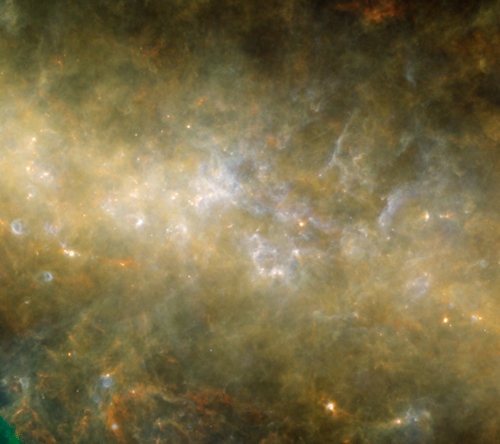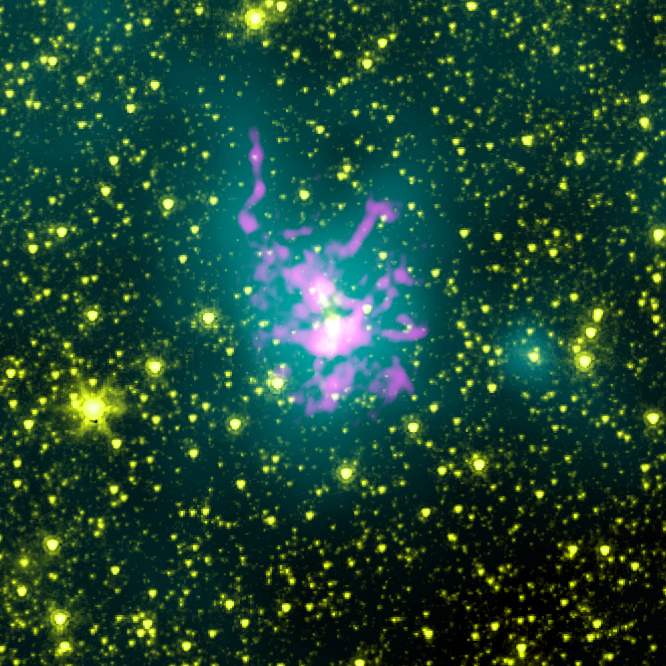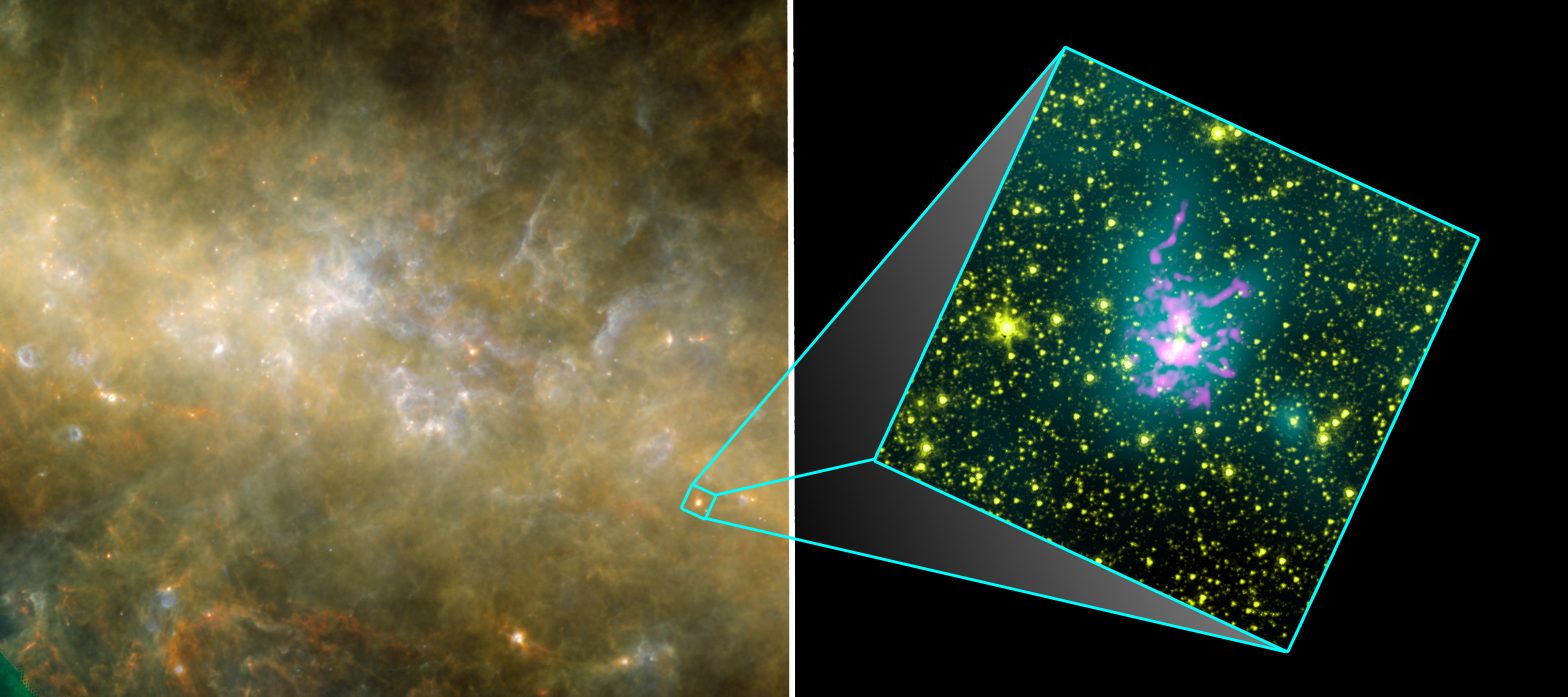| Basic Information | |
| What is this? | A cloud of gas and dust in which an incredibly massive star is forming |
| Where is it in the sky? | In the constellation of Norma |
| How big is it? | The largest-protostellar core is 500 times as massive as our Sun |
| How far away is it? | Around 11,000 light years |
| What do the colours represent? | On the left, red is cooler dust while blue is warmer; on the right yellow shows stars and hot dust, blue shows cool dust, while pink shows the gas in the starforming region |
Downloads
See this object in:
Herschel has helped astonomers spot the birth of one of the largest stars in our galaxy. The behemoth lies at the heart of a dusty cocoon containing more than 500 hundred times the mass of our Sun. This in turn lies in a cloud of gas and dust called “Spitzer Dark Cloud 335”.

The formation of massive stars is not well understood, partly because their formation is so fast. Typically they take less than a million years to form, so catching them in the act is very difficult. The stellar embryo is still in the early stages of formation, currently classed as a protostellar core. It is expected that the resulting star will weigh in at a hundred times the mass of our Sun, something achieved by just one star in 10,000 in our Galaxy.
The cloud of gas and dust was initially spotted in images from the Spitzer satellite, where it appeared as a dark region silhouetted against the background light from the Galaxy. Further images from Herschel, taken as part of the “Hi-GAL” survey, showed that the region contained a few very cold, dense clumps of material in the process of forming stars. But it was much higher resolution images from the ALMA telescope array in the Atacama Desert, Chile, which revealed the immense mass of the protostellar clumps.
“The remarkable observations from ALMA allowed us to get the first really in-depth look at what was going on within this cloud,” says Nicolas Peretto, of Cardiff University and CEA/AIM Parsis-Saclay. “We wanted to see how monster stars form and grow, and we certainly achieved our aim! One of the sources we have found is an absolute giant — the largest protostellar core ever spotted in the Milky Way.”

This monster star will not be alone, and once the cloud has finished forming stars it is predicted that there will be a cluster of several hundred stars within a few light years of each other, but most will be much smaller. The end result may well be similar in many respects to the massive cluster of stars at the heart of the Orion Nebula.
The outer regions of the cloud have a filamentary structure, with tendrils extending in several directions. The ALMA data showed that gas is moving along these filaments, feeding the formation of stars in the centre.
Results such as this are greatly increasing our understanding of the formation of massive stars. While gravity plays a very important role, causing clumps of gas and dust to collapse and form dense protostellar cores, it is uncertain as to what scale this take place. A long standing question is whether the most massive they form from lots of small, dense clumps merging together, or rather from the large-scale collapse of a single larger cloud of gas and dust. The size and density of the protostellar cores at the centre of this cloud imply that it is the large-scale global collapse which has led to the formation of this clump, though whether that is true everywhere is unknown.
Detailed Information
- ALMA Prenatal Scan Reveals Embryonic Monster Star – ESO website

